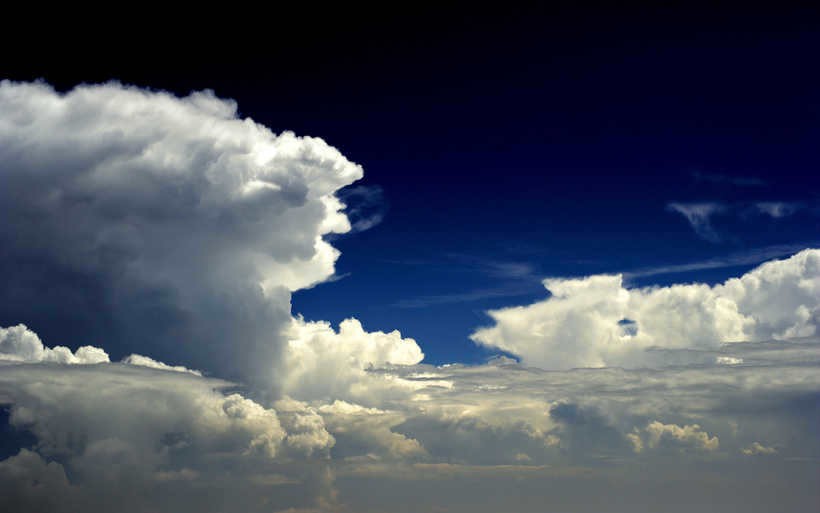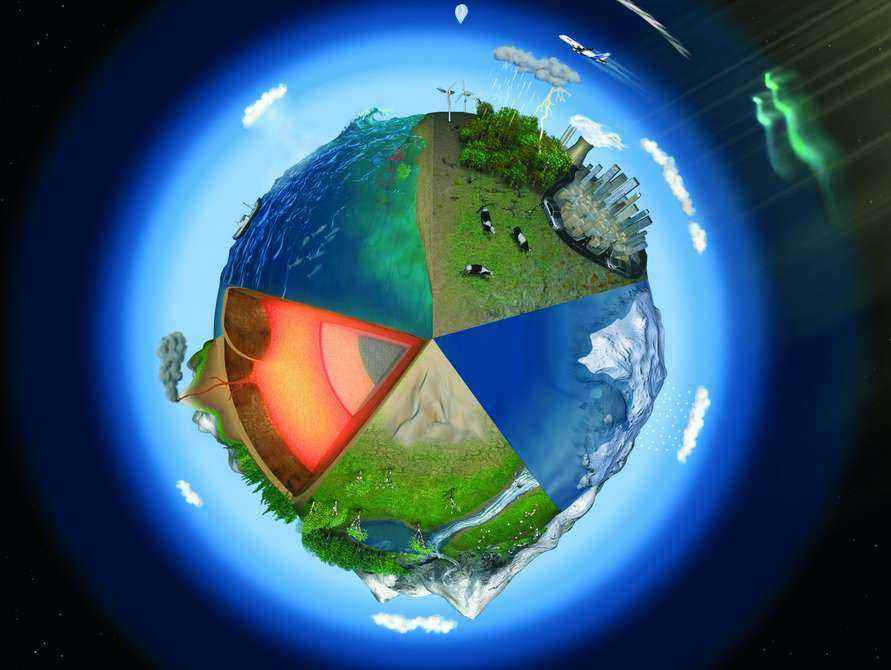
The celestial body known as Earth is situated as the third planet from our star, the Sun, positioned in the space between Venus and Mars. It holds the distinction of being the most compact planet within the solar system, as well as being the largest member of the terrestrial group of planets. Moreover, Earth is distinguished as the sole astronomical entity recognized to support and nurture life. Based on radiometric dating techniques and other investigative methods, scientists have determined that our planet came into existence roughly 4.54 billion years ago. As it occupies its place in the universe, Earth experiences gravitational interactions with various other celestial bodies, most notably the Sun and the Moon.
The Earth consists of four primary spheres or shells that rely on one another and serve as the biological and physical components of our planet. These are scientifically known as biophysical elements, specifically the hydrosphere (referring to water), the biosphere (referring to living things), the lithosphere (referring to land or the Earth’s surface), and the atmosphere (referring to air). These significant spheres of our planet are further subdivided into various sub-spheres.
Now, let’s delve into each of the Earth’s four shells to gain a deeper understanding of their roles and significance.
The solid shell of the Earth is known as the lithosphere
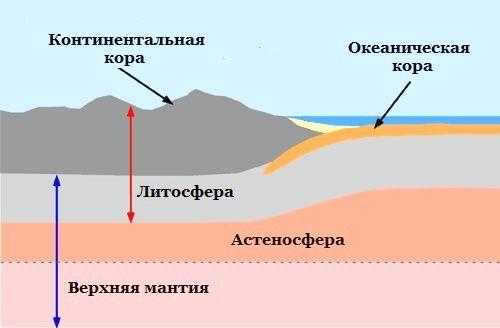
The geosphere, also known as the lithosphere, encompasses all the rocks on Earth. It consists of the Earth’s crust and the upper portion of the mantle. The lithosphere is bordered by the atmosphere above and the asthenosphere below, which is a layer in the upper mantle of the Earth. Examples of components of the lithosphere include the boulders found on Mount Everest, sand on the beaches of Miami, and the lava that erupts from Mount Kilauea in Hawaii.
The lithosphere is the toughest layer of our planet. Its actual thickness can range from approximately 40 km to 280 km. The lithosphere terminates when the minerals in the Earth’s crust become viscous and liquid. The exact depth at which this occurs depends on the chemical composition of the rock, as well as the temperature and pressure.
There are two categories of lithosphere: oceanic lithosphere and continental lithosphere. The oceanic lithosphere is linked to the oceanic crust and has a slightly higher density compared to the continental lithosphere. On the other hand, the continental lithosphere, which is associated with the continental crust, can have a significantly greater thickness than the oceanic lithosphere, reaching depths of up to 200 km beneath the Earth’s surface.
One of the most well-known characteristics attributed to the Earth’s lithosphere is tectonic activity, which refers to the interaction of large tectonic plates that make up the lithosphere.
The lithosphere is composed of tectonic plates that interlock like a fragmented puzzle. These plates are not fixed in place, but rather move gradually. The majority of tectonic activity occurs at the boundaries of these plates, where they can collide, separate, or slide beneath one another. The movement of tectonic plates is enabled by the thermal energy originating from the mantle portion of the lithosphere. This thermal energy imparts elasticity to the solid lithosphere.
Tectonic activity is accountable for some of the most remarkable geological phenomena on Earth, including earthquakes, volcanoes, the formation of mountains (orogenesis), and the creation of deep ocean trenches as a result of tectonic activity within the lithosphere.

The hydrosphere is the encompassing body of water that encompasses all of the water on our planet. It comprises water that is located on the planet’s surface, underneath the ground, and in the atmosphere. A planet’s hydrosphere can exist in the form of liquid, vapor, or solid ice.
On Earth, liquid water is present on the surface in the form of oceans, lakes, and rivers. Underground, it can be found in wells and aquifers, as well as groundwater. Water vapor is most visible when it condenses into clouds and fog.
The frozen portion of the Earth’s hydrosphere is composed of ice, including glaciers, ice caps, and icebergs, and it is known as the cryosphere.
Water moves through the hydrosphere in a cyclical manner. It accumulates in clouds, then precipitates back to Earth as rain or snow. This water then gathers in rivers, lakes, and oceans. It subsequently evaporates into the atmosphere, initiating the cycle once again. This process is referred to as the hydrologic cycle.
According to scientists, the total amount of water on Earth is estimated to be more than 1,386 million cubic kilometers.
More than 97% of the Earth’s water supply is found in the oceans, while the remaining percentage is fresh water. However, two-thirds of this fresh water is frozen in the polar regions and on mountain tops. It is worth noting that even though water covers a significant portion of the Earth’s surface, it only accounts for 0.023% of the planet’s total mass.
The Earth’s biosphere is a vibrant, dynamic ecosystem
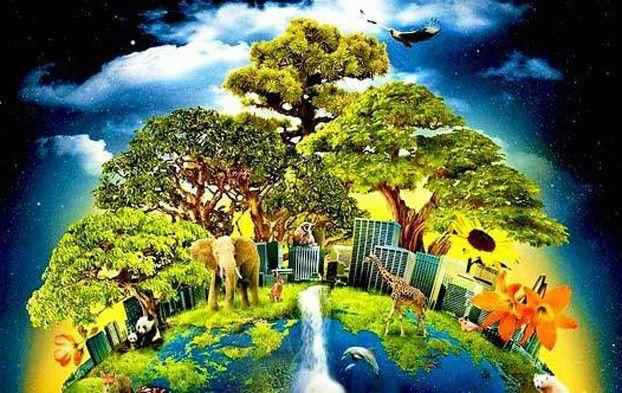
The biosphere encompasses the areas on Earth where living organisms can be found. It spans from the deepest roots of trees to the depths of the ocean, from vibrant rainforests to towering mountain peaks.
Due to the presence of life on land, in the air, and in water, the biosphere encompasses all of these domains. While the biosphere reaches up to approximately 20 kilometers in height, the majority of life is concentrated between 500 meters below the ocean’s surface and 6 kilometers above sea level.
The biosphere has existed for around 3.5 billion years. The earliest life forms within the biosphere, known as prokaryotes, thrived in the absence of oxygen. These ancient prokaryotes included single-celled organisms like bacteria and archaea.
The Earth’s air envelope is known as the atmosphere
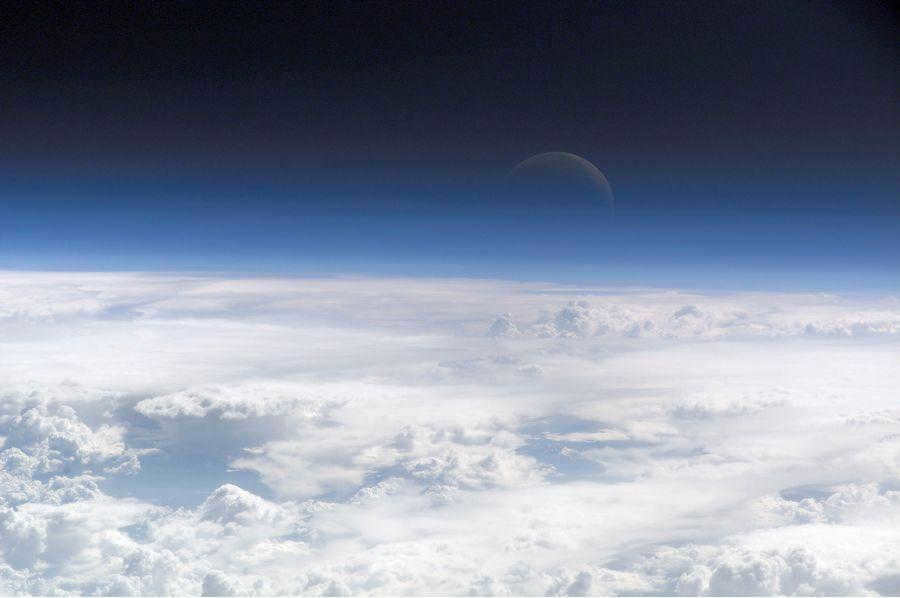
The Earth’s atmosphere is a mixture of gases that surround our planet due to the force of gravity. The majority of the atmosphere is located near the Earth’s surface, where it is the most dense. Nitrogen makes up 79% of the air, while oxygen accounts for just under 21%. Additionally, there are traces of argon, carbon dioxide, and other gases present. Water vapor and dust particles also contribute to the composition of the atmosphere. In contrast, other celestial bodies such as planets and the Moon have distinct atmospheres, with some lacking an atmosphere altogether. The vastness of the atmosphere makes it nearly imperceptible, yet its weight is equivalent to a layer of water more than 10 meters deep that envelops the entire planet. The lower 30 kilometers of the atmosphere contain approximately 98% of its total mass.
Scientists claim that early volcanoes were responsible for releasing many of the gases present in our atmosphere. During that period, there was a limited amount of free oxygen in the Earth’s surroundings. Free oxygen consists of oxygen molecules that are not bonded with other elements like carbon (to create carbon dioxide) or hydrogen (to create water).
Primitive organisms, likely bacteria, potentially released free oxygen into the atmosphere through the process of photosynthesis. As time went on, more complex types of plant life contributed additional oxygen to the atmosphere. It probably took millions of years for the oxygen in today’s atmosphere to accumulate.
The atmosphere functions as a massive filter, absorbing the majority of ultraviolet radiation while allowing sunlight to pass through. Ultraviolet radiation can be harmful to living organisms and cause burns. Nevertheless, solar energy remains crucial for all life on Earth.
The Earth’s atmosphere is structured in layers, including the troposphere, stratosphere, mesosphere, thermosphere, and exosphere. There is also a layer known as the ionosphere, which extends from the mesosphere to the exosphere. Beyond the exosphere lies the cosmos. The boundaries between these layers are not well-defined and can change depending on latitude and time of year.
All four spheres can coexist in the same location. For instance, a patch of earth will contain minerals from the lithosphere. It will also have components of the hydrosphere, representing moisture in the soil, the biosphere in the form of insects and plants, and even the atmosphere as soil air.
The interconnectedness of all the spheres is crucial, as they rely on each other like a single organism. Alterations in one sphere will have an impact on another. As a result, everything we do on our planet influences other processes within it (even if we are unable to perceive it with our own eyes).
Comprehending the interdependence of all of Earth’s spheres is highly significant for individuals engaged in environmental matters.
Everyone knows how crucial air is to the biosphere. It’s the very composition of air that allows life to thrive on our planet. But have you ever wondered what the Earth’s air shell is called? What does it consist of and what makes it so special? What are its chemical makeup and physical properties? These are fascinating questions that pique the curiosity of many.
What is the term for the layer of air surrounding the Earth?

It is a well-known fact that the presence of a unique air composition is vital for sustaining life on Earth. This essential gas envelope is known as the atmosphere, which encompasses the entire planet and is held in place by gravity.
Naturally, the atmosphere possesses distinct chemical and physical properties. However, defining its precise boundaries is a challenging task. While it interacts with the lithosphere and hydrosphere near the Earth’s surface, determining the exact point where the gas envelope ends and outer space begins is extremely complex. Currently, the boundary is commonly established at an altitude of 100 kilometers, where the Karman line is situated. Beyond this point, aeronautics becomes unfeasible.
The Earth’s atmosphere is a vital protective layer that plays a crucial role in safeguarding life on our planet. It is of utmost importance to recognize that the pervasive ionizing and ultraviolet radiation present in outer space poses a significant threat to living organisms. However, it is within the gaseous envelope of our atmosphere that these harmful rays are effectively neutralized, ensuring the preservation of life.
The Origin of Earth’s Atmosphere: A Theoretical Perspective
Many individuals are curious about the formation of Earth’s atmospheric layer. However, pinpointing an exact answer to this question is challenging as there exist several divergent theories regarding the origin of the atmosphere.
As per the prevailing hypothesis, the primary atmosphere came into existence around four billion years ago through the capture of light gases, specifically helium and hydrogen, from interplanetary space. Subsequently, a secondary gas envelope was formed due to intense volcanic activity, which became enriched with carbon dioxide, water vapor, and ammonia.
The tertiary atmosphere emerged through a multitude of processes such as chemical reactions (e.g., lightning discharges), ultraviolet influences, and the release of helium and hydrogen back into interplanetary space.

Now that we have identified the name of the Earth’s atmospheric layer, let’s explore its unique chemical composition. It is important to note that different gases are primarily found in the lower layers of the atmosphere. Specifically, the air we breathe is predominantly composed of nitrogen (78.08%). Oxygen levels are at 20.95%. These two gases are the main components.
Furthermore, the Earth’s atmospheric layer also contains other substances such as carbon dioxide, hydrogen, argon, helium, xenon, methane, sulfur and nitrogen oxides, ozone, and ammonia.
Composition of Earth’s Atmospheric Layer
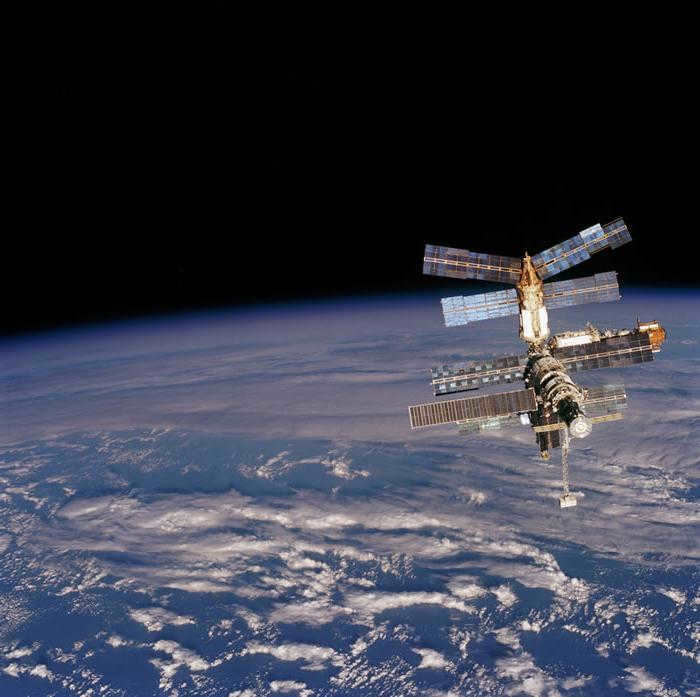

The earth’s air envelope is known as the atmosphere, and it is divided into various layers, each with its own unique physical and chemical properties.
- The layer closest to the earth’s surface is called the troposphere. Approximately 80% of the air is concentrated here, making it conducive for human activity. Additionally, about 90% of atmospheric water is found in this layer, contributing to the formation of clouds and precipitation. The troposphere extends up to 18 km from the surface of the earth, and the temperature decreases as altitude increases.
- Located between 12 to 50 km above the surface, the stratosphere is considered the most stable part of the atmosphere. It is home to the ozone protective layer.
- At an altitude of 3000 km, the exosphere transitions into outer space, making it a scattering zone. This region is filled with light gases like hydrogen and helium, giving the air a unique composition.
Overview of the atmosphere’s fundamental physical properties
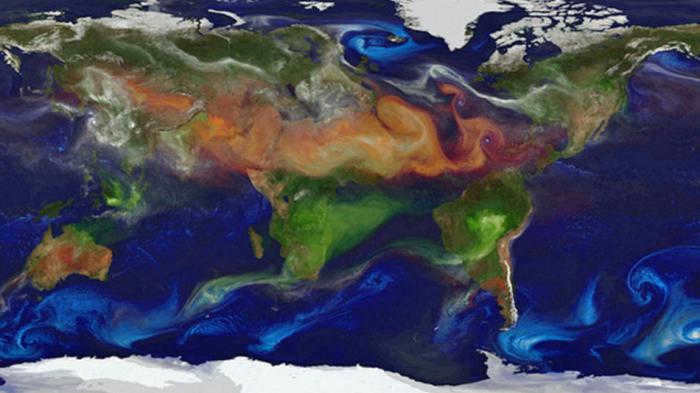
Undoubtedly, the air’s physical characteristics play a vital role. By understanding these properties, we can determine how the atmosphere impacts humans and other living organisms. Additionally, measuring physical parameters is crucial in establishing the optimal specifications for aircraft and airplanes. Some of the key physical parameters considered include:
- Air temperature is determined using the formula: t1 = t – 6.5H (where t represents the air temperature at the Earth’s surface and H is the altitude).
- Air density refers to the mass of air per cubic meter.
- Pressure, which can be measured in either Pascals or atmospheres.
- Humidity indicates the quantity of water present in a given volume of air. It is important to recognize that absolute zero humidity can only be achieved under controlled laboratory conditions. As humidity levels increase, air density decreases, and vice versa.
Incidentally, the field of science that investigates the Earth’s atmospheric envelope, its properties, and characteristics is known as meteorology. Scientists not only study the atmosphere but also monitor its continual fluctuations, which have an impact on weather patterns and climate.
The Significance of the Earth’s Atmosphere
The significance of Earth’s gas envelope cannot be overstated. Being deprived of air for just a few minutes can result in loss of consciousness, hypoxia, and irreversible brain damage. It is the remarkable composition of the atmosphere that enables living organisms to obtain the necessary oxygen.
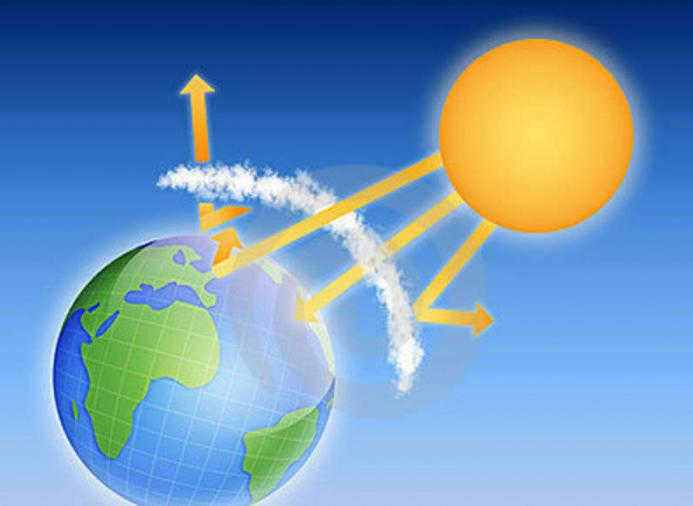
Furthermore, the atmosphere serves as a shield, safeguarding the Earth’s surface against detrimental cosmic radiation. Simultaneously, it permits an adequate amount of ultraviolet rays to penetrate, thereby warming the planet. Researchers argue that a reduction in ultraviolet light will result in a drop in overall temperatures and potential freezing. Additionally, moderate exposure to sunlight generates vitamin D within the tissues of the human skin.
The Significance of the Ozone Layer
The ozone layer exists in the stratosphere, situated between 12-50 km above the Earth’s surface. This crucial part of the atmosphere was first identified by French scientists Ch. Fabry and A. Buisson in 1912.
Ozone is an odorless gas that is transparent in color. It is composed of three oxygen atoms and plays a vital role in shielding the Earth’s surface from harmful cosmic radiation.
Regrettably, the advancement of technology and industrialization has led to an increase in harmful substances present in the Earth’s atmospheric layer, gradually depleting the ozone layer. The emergence of ozone holes poses a highly perilous predicament.
Effects of Air Pollution: Global Warming and Acid Rain
Regrettably, ongoing air pollution, primarily caused by industrial development, results in significant degradation. One of the most concerning consequences is the greenhouse effect. Essentially, the Earth’s surfaces emit waves primarily in the form of infrared radiation, which is unable to penetrate the atmosphere. However, an increase in greenhouse gas concentrations, such as water vapor and carbon dioxide, leads to the absorption of infrared radiation, causing a rise in overall temperature within the lower atmosphere, consequently impacting the climate.
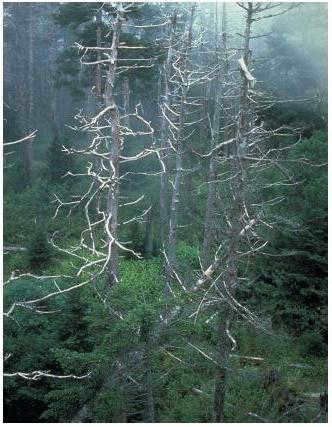

Industrial pollution of the Earth’s air envelope leads to the occurrence of acid rain as well. Thermal power plants, automobiles, metallurgical plants, and other industries emit sulfur and nitrogen oxides into the atmosphere. These emissions can react with water vapor in the air and, under the influence of solar radiation, form acids that eventually precipitate along with other forms of precipitation.

The immense potential of Earth’s atmospheric layer
The air envelope surrounding our planet is composed of a diverse blend of gases and water vapor.
Within this atmospheric layer, known as the troposphere, the majority of gases possess considerable mass, which serves to anchor them and maintain their presence:

- The layer of air surrounding the Earth is known as the troposphere;
- This region is approximately 8 kilometers thick at the poles and 16 kilometers thick at the Equator;
- Within the lower portion of the troposphere, precipitation forms, oxygen is concentrated, and life flourishes. Interestingly, some birds have the ability to fly as high as 12 kilometers above the Earth’s surface;
- As you ascend within the troposphere, the air gradually becomes thinner. Consequently, humans may experience difficulty breathing at high altitudes, and helicopters are unable to surpass heights greater than 9 kilometers.
How Space Debris Gets Destroyed in the Atmosphere
Contrary to popular belief, the reason why space debris burns up in the atmosphere is not because of extremely high temperatures.
Take, for instance, an altitude of 500 km, where the temperature can reach up to 1500 degrees. This temperature is a result of gas decomposition caused by solar radiation. However, the density of the gases at that altitude is so low that space objects can pass through this layer without any damage.
The actual destruction of space debris occurs in the mesosphere, which is extremely cold, reaching temperatures as low as -90 degrees Celsius. The destruction happens due to the increased density of gases in this layer. In other words, the space objects rub against the atmosphere, similar to how tires rub against the asphalt.

When we see a shooting star, we often make a wish, but in reality, these are not stars, but meteorites that are burning up in our atmosphere.
Interestingly, all meteorites that enter the Earth’s atmosphere eventually reach the surface in the form of dust and small stones.
As a student, I learned that a person can survive without water for about 3 days, but without air, we can only last for about 5 minutes. This clearly indicates the importance of air for our survival. I became curious about the Earth’s air shell, its origin, structure, and significance for human life.

What is the Earth’s atmospheric envelope
I have always been curious as to why simple things are given complex names. This is especially true for the Earth’s atmospheric envelope, which is referred to by the ancient Greek word “atmosphere”. The atmosphere is present not only on our planet, but also on other celestial bodies, and is held in place by gravity. The outer layer of our planet’s atmospheric envelope is approximately 2,000 kilometers thick and is composed of:

- A combination of various gases including nitrogen, oxygen, argon, and more;
- Impurities in the form of aerosols;
- Presence of water vapor.
Each layer of the "bun" has a vital role in supporting life, but I believe that the stratosphere is the most crucial layer. While all the layers exist in other planets of the solar system, only Earth has a stratosphere which contains ozone, creating unique conditions for life.
I have a deep appreciation for the air in the mountains. Although I am not an experienced mountaineer, I have reached a maximum height of 2300 meters. However, at an altitude of 5 km above sea level, one may experience a sudden decline in well-being due to lower oxygen levels. I will now delve into more details about these characteristics and other aspects of the Earth’s atmospheric envelope.
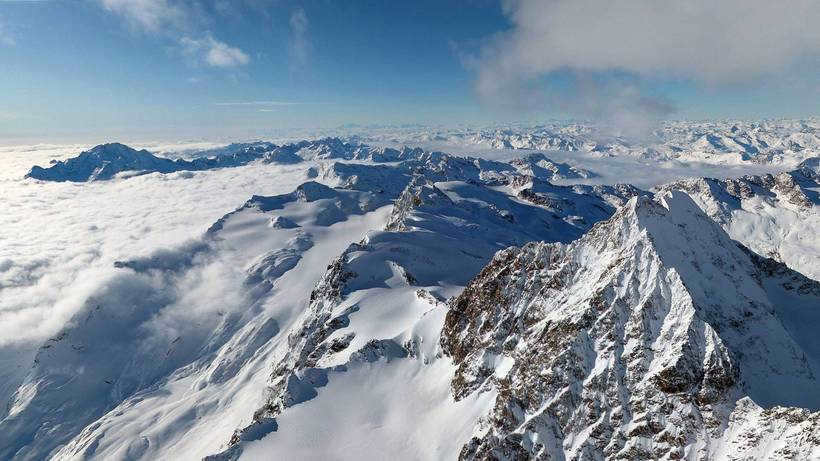
The Earth’s Atmosphere and its Composition
The layer of gases surrounding our planet is known as the atmosphere. It is this atmosphere that allows us to breathe. It is composed of:
Nitrogen makes up 78% of the air, while oxygen accounts for 21% – an essential element for our existence. The concentration of carbon dioxide in the atmosphere is steadily increasing, primarily due to human activities. The emissions from industrial plants and vehicles contribute significantly to the increase in atmospheric carbon dioxide, while deforestation further exacerbates the situation.
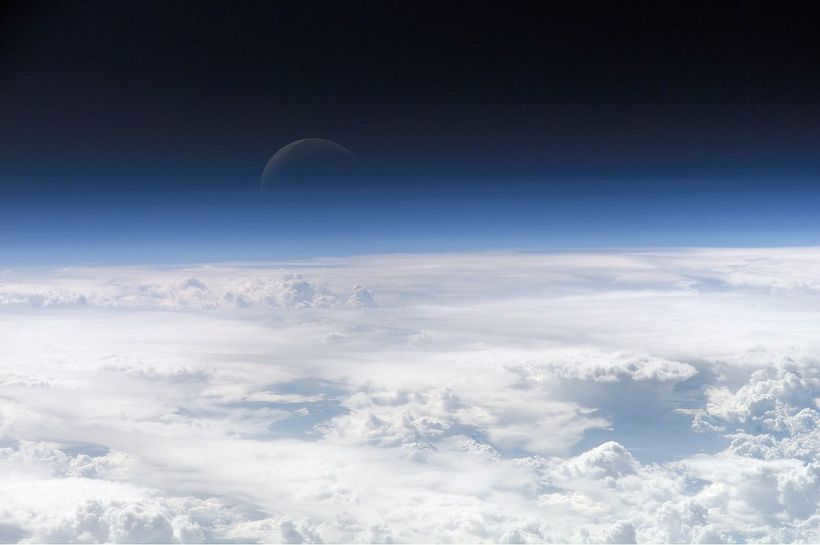
Furthermore, the atmosphere contains ozone, which has resulted in the creation of a safeguarding shield around the Earth. This protective layer is situated approximately 30 km above the planet’s surface and serves as a barrier against the harmful impacts of the Sun.
Distinct features can be observed within the different layers of the atmospheric shell, which consists of five distinct layers: the troposphere, stratosphere, mesosphere, thermosphere, and exosphere. The troposphere, being the closest to Earth’s surface, is where precipitation such as rain, snow, and fog are formed.
What are the roles fulfilled by the atmosphere?
Without its protective layer, the Earth would be devoid of abundant life. Primarily, the atmosphere shields all organisms on the planet from harmful solar radiation. Moreover, it enables the maintenance of a favorable temperature range for sustaining life. The serene azure skies that we are accustomed to may owe their existence to the diverse particles suspended in the air.

The air envelope is responsible for the distribution of sunlight and the propagation of sound. It enables us to hear various sounds, such as human voices, bird songs, raindrops, and the wind. Moreover, the atmosphere plays a crucial role in the redistribution of moisture. It creates a favorable environment for the existence of humans, animals, and plants.
The atmosphere, derived from the Greek words “atmos” meaning air and “sphaira” meaning ball, is the Earth’s outer shell that surrounds the planet and rotates with it around its axis. It is the outermost layer of the Earth. The origins of the atmosphere are still a mystery to scientists, and astronauts who have observed the Earth from space describe it as being enveloped in a bluish haze.
According to one hypothesis, the atmosphere originated from the incandescent gases released by volcanoes. Initially, it consisted mostly of nitrogen, but as precipitation accumulated, a watery surface formed on Earth, leading to the emergence of plants. These plants then created a balance between nitrogen and oxygen.
Composition of the atmosphere
The atmosphere is composed of air, which is in turn composed of various gases. The atmospheric air consists of nitrogen (78%), oxygen (21%), and other gases (1%). These other gases include carbon dioxide, helium, water vapor, ozone, krypton, xenon, argon, and others. Air itself possesses certain properties: it is transparent, colorless, odorless, and invisible. It supports combustion, is highly compressible, and exhibits elasticity.
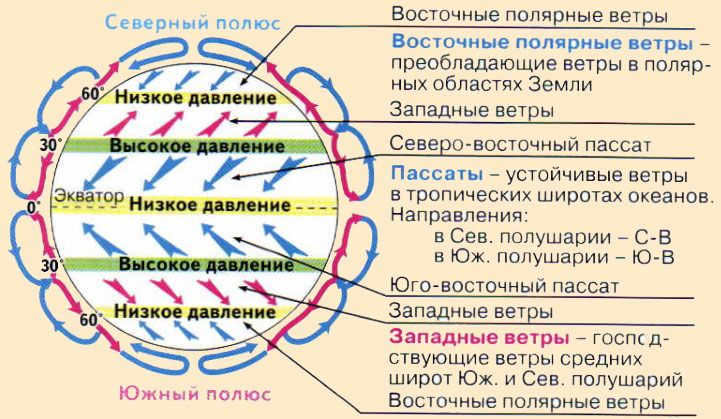
The majority of the Earth’s air mass is contained within the troposphere. The temperature within this layer decreases as altitude increases, with the air cooling by 6 degrees for every kilometer of ascent. It is within the troposphere that air movement, known as wind, occurs. This layer is also responsible for the formation of weather phenomena and clouds. In fact, all weather originates and takes place within the troposphere, which is often referred to as “nature’s kitchen.”
The temperature continues to decrease in the mesosphere. However, beyond this layer, the air begins to heat up significantly. At an altitude of 550 km, the air temperature reaches a scorching +1500 degrees.
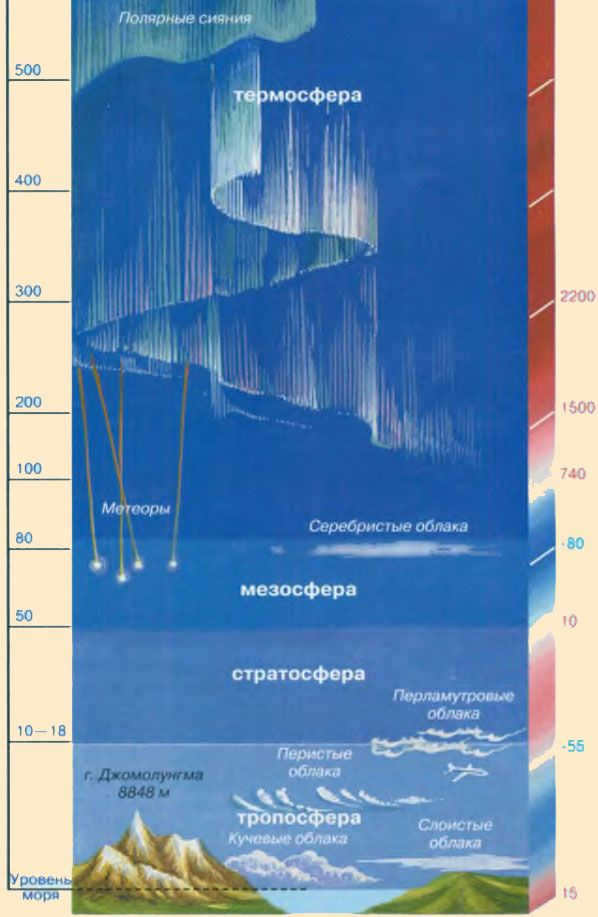
Significance of the Atmosphere
The significance of the atmosphere for the Earth is immense as it contains the air essential for the survival of all living organisms. Life on Earth would be impossible without this protective layer. Some scientists argue that humans do not inhabit the surface of the Earth, but rather the bottom of an air ocean.
- Serves as a shield, safeguarding the Earth from incoming meteorites. Only a few manage to reach the Earth’s surface, with the majority burning up in the atmosphere.
- Acts as a “blanket,” maintaining the planet at a comfortable temperature. For instance, on the Moon, which lacks an atmosphere, temperatures average +140 deg. during the day and -200 deg. at night.
- The atmosphere sustains life. It consists of oxygen, which is essential for life to exist.
- The atmosphere shields against ultraviolet radiation. At an altitude of approximately 20 kilometers, the ozone layer begins to fulfill this protective role.
The atmosphere is responsible for the creation of our planet and its visible appearance. Industrial activities, such as the release of carbon dioxide, soot, and dust, gradually alter the atmosphere’s composition. Currently, these changes are occurring without significant consequences, but eventually, a limit will be reached.
Methods of Atmospheric Study
The study of the Earth’s atmosphere is a complex and global endeavor. The World Meteorological Organization (WMO), an international organization that includes Russia as a member, plays a key role in advancing atmospheric research. Various tools and technologies, such as weather stations, balloons, rockets, and satellites, are utilized in this scientific pursuit. Balloons, for instance, are used to determine the boundaries between the troposphere and the stratosphere, providing valuable insights into the structure of the atmosphere.
Weather refers to the specific atmospheric conditions present in a particular location at a given time.

The Earth is positioned as the third planet from the Sun, residing between Venus and Mars. It holds the distinction of being the most compact planet in the entirety of the solar system, as well as the largest member of the group of four terrestrial planets. Moreover, it stands alone as the sole astronomical entity acknowledged to harbor life. Based on meticulous radiometric dating and a variety of other investigative approaches, it has been determined that our planet came into existence approximately 4.54 billion years ago. In the realm of celestial bodies, the Earth engages in gravitational interactions with various other objects, with particular emphasis on the Sun and Moon.
The Earth is composed of four primary spheres or layers that are interconnected and serve as the biological and physical components of our planet. These are scientifically known as the biophysical elements, specifically the hydrosphere (representing water), the biosphere (representing living organisms), the lithosphere (representing land or the Earth’s surface), and the atmosphere (representing air). These fundamental spheres of our planet are further subdivided into various sub-spheres.
Now, let’s delve into each of the four shells of Earth to gain a deeper understanding of their roles and significance.
The Earth’s solid shell is known as the Lithosphere

The lithosphere, also known as the geosphere, encompasses all of the Earth’s rocky materials. This includes the Earth’s crust and the upper portion of the mantle. The lithosphere is bounded by the atmosphere above and the asthenosphere below, which is a layer in the Earth’s upper mantle. Examples of lithosphere components include the massive boulders found on Mount Everest, the sandy beaches of Miami, and the molten lava that erupts from Mount Kilauea in Hawaii.
Considered the most rigid layer of our planet, the lithosphere can vary in thickness from approximately 40 km to 280 km. The lithosphere transitions into a viscous, liquid state when the minerals in the Earth’s crust reach a certain point. The depth at which this occurs depends on factors such as the chemical composition of the rock, as well as the temperature and pressure present.
Tectonic activity is the most well-known feature associated with the Earth’s lithosphere. This activity involves the interaction of large plates of lithosphere known as tectonic plates.
The lithosphere is divided into tectonic plates that fit together like a puzzle with jagged edges. These plates are not fixed in place; they move slowly over time. The majority of tectonic activity occurs at the boundaries of these plates, where they can collide, separate, or slide beneath one another. The movement of tectonic plates is enabled by thermal energy from the mantle, which is part of the lithosphere. This thermal energy gives the solid lithosphere greater elasticity.
Tectonic activity is responsible for some of the most dramatic geological events on Earth, including earthquakes, volcanoes, the formation of mountains (known as orogenesis), and the creation of deep ocean trenches as a result of tectonic activity within the lithosphere.
The Earth’s water envelope is known as the hydrosphere

The hydrosphere encompasses all the water on our planet, including water present on the Earth’s surface, underground, and in the atmosphere. The hydrosphere can exist in various states, such as liquid, vapor, or ice.
On our planet, liquid water is present in the form of oceans, lakes, and rivers on the surface. Underground, it can be found in wells, aquifers, and as groundwater. Water vapor is most noticeable when it condenses to form clouds and fog.
The frozen portion of the Earth’s hydrosphere consists of ice, including glaciers, ice caps, and icebergs. This frozen part of the hydrosphere is commonly referred to as the cryosphere.
The movement of water through the hydrosphere occurs in a cyclic manner. It first accumulates in clouds and then precipitates as rain or snow, replenishing the Earth’s water sources. This water then gathers in rivers, lakes, and oceans before evaporating back into the atmosphere, initiating the cycle once again. This continuous process is known as the hydrologic cycle.
Scientists have estimated that our planet harbors a vast amount of water, with a volume exceeding 1,386 million cubic kilometers.
The majority of Earth’s water supply, approximately 97%, is found within the oceans. The remaining portion consists of fresh water, of which two-thirds is trapped in the polar regions and atop snowy mountain peaks. It is fascinating to consider that despite water covering a significant portion of the Earth’s surface, it constitutes a mere 0.023% of the planet’s total mass.

The biosphere encompasses the regions on Earth where life thrives. It spans from the deepest roots of trees to the vast depths of the oceans, from vibrant rainforests to towering mountain peaks.
Because life exists in the land, air, and water, the biosphere intersects all of these domains. While the biosphere reaches heights of about 20 kilometers, the majority of life is concentrated between 500 meters below the ocean’s surface and 6 kilometers above sea level.
Existing for approximately 3.5 billion years, the biosphere is home to the earliest forms of life. These primitive life forms, known as prokaryotes, thrived in an oxygen-free environment. Prokaryotes consisted of single-celled organisms like bacteria and archaea.
The biosphere can be perceived as a unified ecosystem, consisting of various living and non-living elements that interact as a cohesive unit. However, it is more commonly acknowledged as an assemblage of numerous ecological systems.
Atmosphere – the Earth’s atmospheric envelope

The layer of gases that envelops our planet and is held in place by Earth’s gravitational force is known as the atmosphere. The majority of our atmosphere is located near the Earth’s surface, where it is most concentrated. The composition of Earth’s air consists of approximately 79% nitrogen, just under 21% oxygen, along with argon, carbon dioxide, and various other gases. Water vapor and dust particles are also present in Earth’s atmosphere. In contrast, other planets and the Moon possess vastly different atmospheres, with some lacking an atmosphere altogether. Space, on the other hand, is devoid of any atmosphere.
The atmosphere is so vast that it is nearly imperceptible, yet its weight is equivalent to a layer of water that is over 10 meters deep and covers the entirety of our planet. The lower 30 kilometers of the atmosphere contains roughly 98% of its total mass.
According to scientists, the gases present in our atmosphere were primarily emitted by ancient volcanoes. During that period, Earth had a limited supply of free oxygen. Free oxygen refers to oxygen molecules that are not chemically bound to other elements, such as carbon (which forms carbon dioxide) or hydrogen (which forms water).
It is speculated that early life forms, most likely bacteria, played a role in adding free oxygen to the atmosphere through photosynthesis. As plant life evolved and became more complex, they contributed even more oxygen to the atmosphere. This gradual accumulation of oxygen likely took millions of years.
The atmosphere acts as a protective shield, filtering out most harmful ultraviolet radiation while allowing sunlight to reach the Earth’s surface. Ultraviolet radiation can be detrimental to living organisms, causing sunburns and other damages. Nevertheless, solar energy remains vital for sustaining life on our planet.
The interplay between the Earth’s spheres
All four domains have the potential to coexist in the same location. For instance, a patch of soil contains minerals from the lithosphere, as well as elements from the hydrosphere, such as moisture within the soil, the biosphere in the form of insects and plants, and even the atmosphere through the presence of soil air.
All spheres are interdependent and intertwined, functioning as a singular organism. Alterations in one domain will inevitably impact another. Consequently, every action we take on our planet has repercussions on other processes, even if they aren’t immediately visible.
Grasping the interconnectedness of Earth’s various envelopes is crucial for individuals engaged in environmental issues.
What is the Earth’s atmospheric layer called? Understanding the structure, physical properties, and composition of the atmosphere
It is common knowledge that air plays a crucial role in the biosphere. Its distinct composition is responsible for supporting life on our planet. However, what is the official term for the Earth’s air envelope? What does it signify, and what sets it apart? Explore the chemical composition and physical properties of this remarkable atmospheric layer that intrigues so many.
What is the term for the layer of air surrounding the Earth?

It is common knowledge that the presence of air with its unique composition is vital for sustaining life on Earth. This gaseous envelope that envelops our planet is known as the atmosphere. Comprised of various gases, this part of the biosphere encircles the Earth and is held in place by the force of gravity.
Naturally, the atmosphere possesses specific chemical and physical properties. However, determining its exact boundaries is a challenging task. The atmosphere is in contact with the lithosphere and hydrosphere near the Earth’s surface, but the demarcation between the gas shell and outer space is elusive. Currently, the boundary is generally recognized to be at an altitude of 100 kilometers, known as the Karman line. Beyond this point, aeronautics becomes unfeasible.
The Origin of Earth’s Atmosphere: An Unresolved Question
The formation of Earth’s atmospheric shell has long puzzled scientists and remains a topic of ongoing debate. Numerous theories have been proposed, each offering a different explanation for its origins.
According to the prevailing hypothesis, the initial atmosphere came into being approximately four billion years ago, when the Earth captured light gases such as helium and hydrogen from the surrounding interplanetary space. Subsequent volcanic activity led to the development of a secondary gas shell, which became enriched with carbon dioxide, water vapor, and ammonia.
The formation of the current atmosphere, known as the tertiary atmosphere, is believed to have involved a series of complex processes. These include chemical reactions, such as lightning discharges, as well as the influence of ultraviolet radiation. Additionally, some helium and hydrogen molecules are thought to have gradually escaped back into interplanetary space.
The composition of the atmosphere in terms of chemicals

Furthermore, the Earth’s atmospheric layer comprises various elements, including carbon dioxide, hydrogen, argon, helium, xenon, methane, sulfur and nitrogen oxides, ozone, and ammonia.
Composition of the Earth’s atmospheric layer
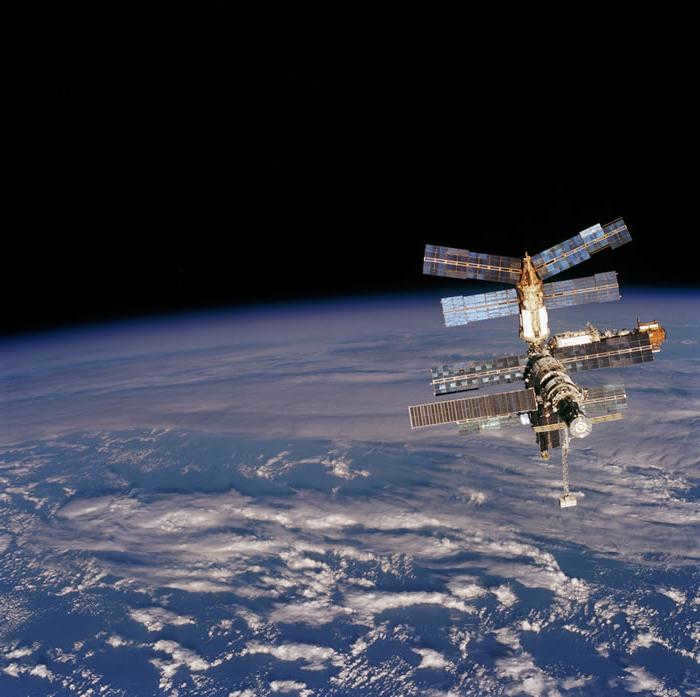
The atmosphere can be divided into several distinct layers, each with its own unique physical and chemical properties.
- The closest layer to the Earth’s surface is known as the troposphere. This layer contains about 80% of the Earth’s air and is where human activity takes place. Additionally, the majority of atmospheric water (around 90%) is found in this layer. It is here that clouds and precipitation are formed. The troposphere extends approximately 18 km from the Earth’s surface, and as you move higher, the temperature decreases.
- The stratosphere, ranging from 12 to 50 km in altitude, is considered the calmest part of the atmosphere. This is where the protective ozone layer is located.
- At an altitude of 3000 km, the exosphere transforms into outer space, making it a scattering zone. In this region, the air is filled with light gases, including hydrogen and helium.
Key physical properties of the atmosphere
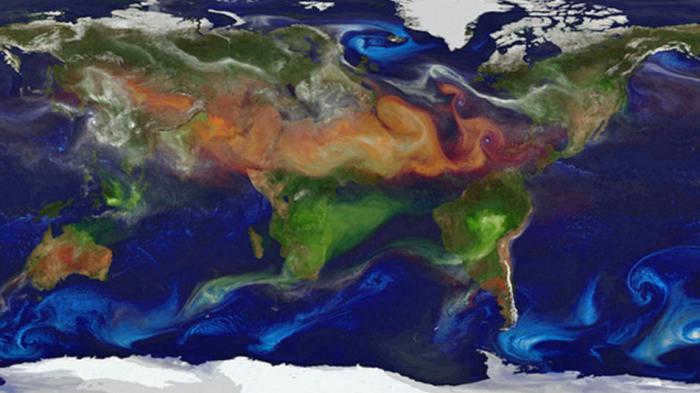
Undoubtedly, the physical characteristics of the atmosphere play a crucial role. For instance, having knowledge about these properties enables us to understand how the atmosphere affects humans and other living organisms. Furthermore, measuring these physical parameters is essential for determining the optimal performance of aircrafts, airplanes, and so on. Specifically, the following physical parameters are considered:
- Air temperature can be calculated using the formula: t1 = t – 6.5H (where t represents the air temperature at the Earth’s surface and H is the altitude).
- Air density refers to the mass of air per cubic meter.
- Pressure can be measured in either Pascals or atmospheres.
- The level of moisture in the air, known as humidity, can be measured to determine the amount of water present. It is important to note that absolute zero humidity can only be achieved under controlled laboratory conditions. Higher levels of humidity result in lower air density, while lower levels of humidity lead to higher air density.
By the way, the branch of science that studies the Earth’s atmospheric layer, including its properties and characteristics, is known as meteorology. Meteorologists not only investigate the atmosphere, but also closely monitor its continuous fluctuations, which have a significant impact on weather patterns and climate.
The Significance of the Earth’s Atmosphere
The significance of the Earth’s gaseous envelope cannot be overstated. Depriving oneself of air for just a few minutes can result in unconsciousness, hypoxia, and irreversible brain damage. It is solely due to the remarkable composition of the atmosphere that living organisms are able to obtain the necessary oxygen.
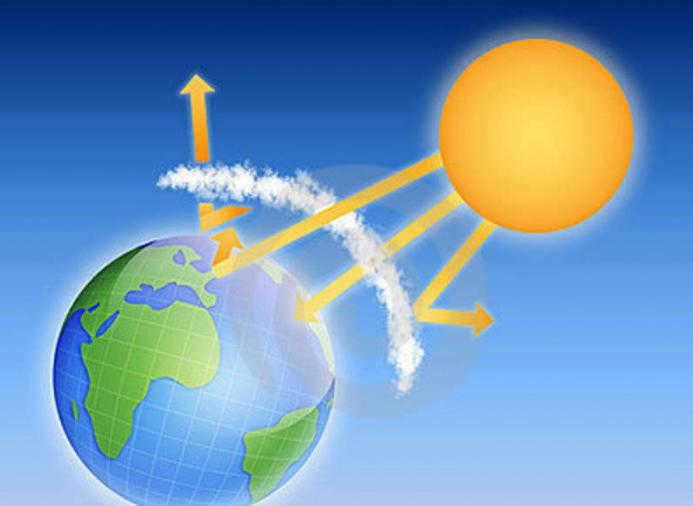
Furthermore, the Earth’s atmosphere acts as a shield against dangerous cosmic rays, safeguarding the planet’s surface. Simultaneously, it allows a sufficient amount of ultraviolet radiation to reach the Earth, providing warmth. According to scientists, a reduction in ultraviolet light would result in lower temperatures and the risk of freezing. Additionally, moderate exposure to sunlight stimulates the production of vitamin D in human skin tissues.
The Significance of the Ozone Layer
Situated in the stratosphere, approximately 12-50 km above the Earth’s surface, lies the ozone layer. This particular section of the atmosphere was first identified by French scientists Ch. Fabry and A. Bouisson back in 1912.
Ozone, a colorless gas with a distinct pungent smell, is composed of three oxygen atoms. It is this layer of gas that serves as a shield, protecting the Earth’s surface from harmful cosmic radiation.
Regrettably, with the advancement of technology and industrialization, the quantity of harmful substances in the Earth’s atmospheric shell has increased, gradually depleting the ozone layer. The emergence of ozone holes poses an extremely perilous problem.
Atmospheric pollution: greenhouse effect and acid rain
Regrettably, ongoing air pollution, primarily linked to industrial development, results in numerous negative consequences. One of these alarming changes is the greenhouse effect. The reality is that Earth’s entities emit waves primarily in the infrared spectrum, which are unable to penetrate the atmosphere. However, an elevation in the concentration of greenhouse gases that absorb infrared radiation (such as water vapor and carbon dioxide) leads to an upsurge in the overall temperature in the lower atmosphere, consequently impacting the climate.
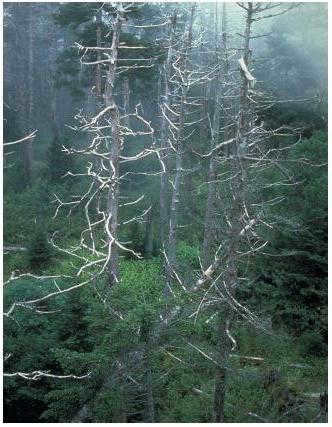
Industrial pollution of the Earth’s air envelope leads to the occurrence of acid rain. The emission of sulfur and nitrogen oxides into the atmosphere by thermal power plants, automobiles, metallurgical plants, and other industries can cause a reaction with water vapor in the air. When exposed to solar radiation, this reaction leads to the formation of acids, which subsequently precipitate along with other forms of precipitation.
The Earth’s atmosphere, derived from the Greek words atmos (air) and sphaira (ball), is the protective layer of air that surrounds the planet and rotates with it around its axis. It is the outermost layer of the Earth. The origins of the atmosphere remain a mystery to scientists, and astronauts who have observed the Earth from space describe it as being enveloped in a bluish haze.
The atmosphere is approximately 3 thousand kilometers thick, extending from the Earth’s surface to space.
According to one hypothesis, the atmosphere originated from the hot gases emitted by volcanoes. Initially, it consisted mainly of nitrogen, but as rainwater accumulated on the Earth’s surface, plants emerged, creating a balance between nitrogen and oxygen.
Structure of the atmosphere
The atmosphere consists of air, which is composed of various gases. The composition of atmospheric air is primarily nitrogen (78%), oxygen (21%), and trace amounts of other gases (1%). These other gases include carbon dioxide, helium, water vapor, ozone, krypton, xenon, argon, and other elements. Air possesses specific characteristics: it is transparent, colorless, odorless, and invisible. Additionally, it supports combustion, is highly compressible, and exhibits elasticity.

Strata of the Earth’s Atmosphere
The majority of the air mass is located in the troposphere, making up about 80% of it. The temperature in this layer gradually decreases as you move from the top to the bottom. In fact, for every kilometer you descend, the temperature drops by around 6 degrees. It is within the troposphere that we find air movements, such as wind, as well as the formation of various weather phenomena and clouds. Essentially, all weather-related activities occur in this layer, earning it the nickname “nature’s kitchen”.
The temperature continues to decrease until we reach the mesosphere. However, once we enter the mesosphere, the temperature starts to rise, and it does so quite dramatically. At an altitude of 550 kilometers, the air reaches scorching temperatures of around +1500 degrees Celsius.

The Significance of the Atmosphere
The significance of the atmosphere for our planet cannot be overstated, as it provides the air necessary for the survival of all living organisms. Without this protective layer, life on Earth would be impossible. Some scientists even argue that humans do not inhabit the surface of the Earth, but rather live at the bottom of an air ocean.
- One of the key functions of the atmosphere is to shield the Earth from incoming meteorites. Only a few manage to penetrate the atmosphere and reach the planet’s surface, while the majority burn up upon entry.
- The atmosphere acts as a “blanket”, maintaining a comfortable temperature on the planet. For instance, on the Moon, where there is no atmosphere, the average daytime temperature is +140 degrees Celsius and -200 degrees Celsius at night.
- The atmosphere preserves life. It consists of oxygen, which is essential for life.
- The atmosphere protects against ultraviolet radiation. The ozone layer starts performing this function at an altitude of around 20 kilometers.
The atmosphere is responsible for creating the planet we live on and the visuals we witness every day. Industrial activities, such as the release of carbon dioxide, soot, and dust, gradually alter the composition of the atmosphere. Currently, these changes are occurring without significant consequences, but there will be a tipping point in the future.


